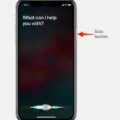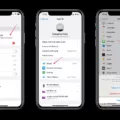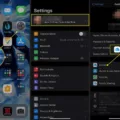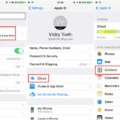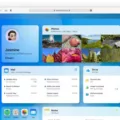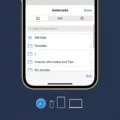In today’s digital age, where we rely heavily on our iPhones, iPads, and other Apple devices, having sufficient storage is crucial. One of the most convenient ways to optimize your storage and keep your messages and attachments safe is by using iCloud. In this article, we will delve into the world of iCloud storage and how it can benefit you.
Setting up iCloud for Messages:
To ensure that you can access your messages on all your devices, it’s essential to set up iCloud for Messages. Simply follow these steps:
1. On your iPhone, iPad, or iPod touch, go to Settings.
2. Tap on your name and then select iCloud.
3. Next, enable iCloud by toggling the switch to the right.
4. To make sure your messages are synced, enable the Messages option under Apps Using iCloud.
By enabling iCloud for Messages, you will ensure that all your messages are backed up and easily accessible across your Apple devices.
Accessing Messages in iCloud:
Once you have set up iCloud for Messages, accessing your messages stored in iCloud is a breeze. Simply open the Messages app on your device, and you will see all your conversations, including the attachments, synced and readily available.
Managing iCloud Messages:
If, for any reason, you wish to disable iCloud Messages on all your devices, follow these steps:
1. Open the Settings app on your device.
2. Tap on your name, then select iCloud.
3. Scroll down and tap on Show All under Apps Using iCloud.
4. Locate and tap on Messages.
5. Next, tap on Manage Storage.
6. tap on Disable & Delete, and confirm the deletion of messages.
It’s worth noting that when you disable iCloud Messages, iOS may determine that you have insufficient storage internally and will delete the content from your device. This is why you may find that your Messages data in iCloud exceeds what you have on your actual iPhone.
Attachments and iCloud Storage:
Attachments, such as photos and videos, play a significant role in our messages. It’s important to keep in mind that these attachments, along with your messages themselves, count towards your overall iCloud storage.
Deleting Attachments:
If you find that your iCloud storage is nearing its limit, you may want to consider deleting unnecessary attachments from your messages. This can be done whether you are using Messages on iCloud or not. By removing these attachments, you can free up valuable storage space.
ICloud storage is a reliable and convenient solution for managing your messages and attachments across all your Apple devices. By setting up iCloud for Messages and managing your iCloud storage effectively, you can ensure that your messages are always accessible and that your device storage is optimized.
Remember, though, that your messages and attachments contribute to your overall iCloud storage, so periodically reviewing and deleting unnecessary content can help you stay within your storage limits. With iCloud, you can have peace of mind knowing that your messages are securely stored and easily accessible whenever you need them.
How Do You Access Your iCloud Backup Text Messages?
To access your iCloud backup text messages, follow these steps:
1. Ensure that you have set up iCloud for Messages on all your devices. On your iPhone, iPad, or iPod touch, go to Settings > [your name] > iCloud. If prompted, sign in to your Apple ID.
2. Once in the iCloud settings, make sure the “Messages” toggle is turned on. This will enable the syncing of your messages across all your devices.
3. To ensure you can see your messages on all your devices, also check the following settings:
– On your iPhone, go to Settings > Messages > Send & Receive. Make sure that your Apple ID is selected under “You Can Be Reached By iMessage At” and that your phone number and email address are checked under “Start New Conversations From.”
– On your iPad or iPod touch, go to Settings > Messages > Send & Receive. Make sure your Apple ID is selected under “You Can Be Reached By iMessage At” and that your phone number and email address are checked under “Start New Conversations From.”
4. Once you have set up iCloud for Messages and checked the necessary settings, you can access your messages stored in iCloud by opening the Messages app on any of your devices. Your messages should now be synced across all your devices, allowing you to view and reply to them seamlessly.
Remember, accessing your iCloud backup text messages requires proper setup and syncing across all your devices. By following these steps, you can ensure that your messages are accessible on all your Apple devices.
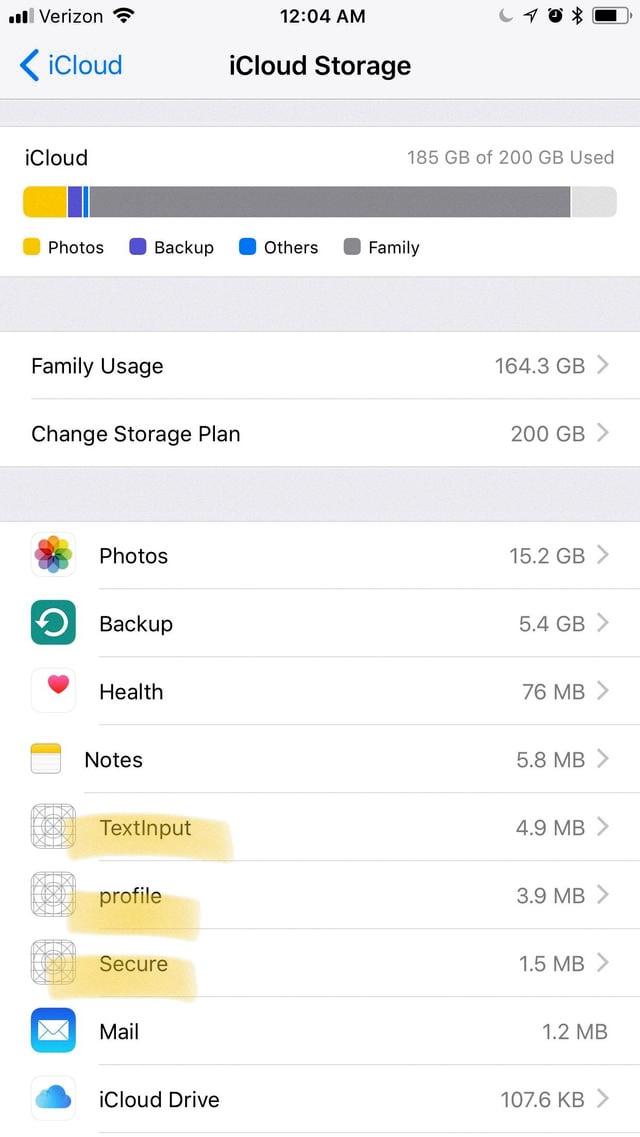
How Do You Turn Off iCloud Storage For Text Messages?
To disable iCloud storage for text messages, follow these steps:
1. Open the Settings app on your device.
2. Look for your name or Apple ID and tap on it.
3. Scroll down and tap on “iCloud.”
4. Under the “APPS USING ICLOUD” section, tap on “Messages.”
5. Next, tap on “Manage Storage.”
6. You will see an option to “Disable & Delete.” Tap on it.
7. A confirmation prompt will appear. Tap on “Delete Messages” to confirm.
By following these steps, you will successfully turn off iCloud storage for text messages.
Why is Your Cloud Storage Filled With Messages?
There are several reasons why your iCloud storage may be filled with Messages data:
1. Message Attachments: When you send or receive messages with attachments like photos, videos, or documents, they are stored in your Messages app. These attachments can take up a significant amount of storage space, especially if you exchange a lot of media files.
2. Message History: Messages on iCloud allows you to sync your entire message history across multiple devices. This means that all your conversations, including text messages, photos, and other attachments, are stored in iCloud. Over time, this can accumulate a large amount of data and consume your iCloud storage.
3. Deleted Messages: Even if you delete messages from your device, they may still be stored in iCloud. This is because iCloud retains deleted messages for a certain period of time, allowing you to recover them if needed. However, these deleted messages still occupy storage space in your iCloud account.
4. Device backups: If you have enabled iCloud Backup on your device, it automatically backs up your entire device, including Messages data. This backup includes your message history, attachments, and settings. If you have a large amount of Messages data on your device, it can contribute to the overall size of your iCloud backup.
To free up iCloud storage occupied by Messages data, you can take the following steps:
– Delete unnecessary message attachments: Open the Messages app on your device, go to a conversation, and tap on the “i” button. From there, you can view all the attachments in that conversation and delete the ones you don’t need.
– Delete old conversations: If you have conversations with a large number of messages and attachments that you no longer need, you can delete them to free up storage. Swipe left on a conversation in the Messages app and tap “Delete” to remove it.
– Optimize iPhone Storage: In your iPhone settings, go to “Settings” > “Your Name” > “iCloud” > “Manage Storage” > “Messages” and enable the “Optimize iPhone Storage” option. This will automatically remove older attachments from your device, keeping only the most recent ones.
By managing your message attachments, deleting unnecessary conversations, and optimizing your iPhone storage settings, you can free up space in your iCloud storage and prevent it from being filled with Messages data.
Does iCloud Storage Include Text Messages?
ICloud storage does include text messages. When you use an iPhone, iPad, or Mac, your text messages are automatically backed up to iCloud, along with other data such as photos, videos, contacts, and app data. This means that your text message conversations are stored in your iCloud account and can be accessed from any device that is signed in with the same iCloud account.
It’s important to note that text messages, along with attachments like photos, videos, and other media, contribute to your overall iCloud storage usage. iCloud offers a limited amount of free storage, typically 5GB, after which you may need to purchase additional storage if you exceed the free limit.
To view your text messages stored in iCloud, you can go to the Messages app on your iPhone, iPad, or Mac, and they will be synced across your devices. This allows you to access your conversations seamlessly, even if you switch between devices. It’s worth mentioning that if you delete a text message from one device, it will also be deleted from all devices connected to the same iCloud account.
ICloud storage does include text messages, providing a convenient way to back up and access your conversations across multiple devices. Just keep in mind that text messages, along with other data, contribute to your overall iCloud storage usage.
Conclusion
Setting up iCloud for Messages on all your devices is a convenient way to ensure that you can access your messages across all your Apple devices. By enabling iCloud Messages, you can easily view and manage your messages stored in the cloud through the Messages app.
It is important to note that enabling iCloud Messages may use up your iCloud storage, as your messages, along with any accompanying photos and attachments, count towards your storage limit. Therefore, it is recommended to regularly manage your iCloud storage and delete unnecessary messages or attachments to free up space.
If you ever need to disable iCloud Messages and remove the associated content from your devices, the process can be easily done through the Settings app. By following the steps outlined, you can disable and delete iCloud Messages, ensuring that you have control over your storage usage.
Additionally, it is worth mentioning that if your device’s internal storage is insufficient, iOS may automatically delete content from your device to make room for new data. This can result in having more Messages data stored in iCloud than on your actual device. However, the process of deleting attachments remains the same, whether you are using Messages on iCloud or not.
ICloud storage for Messages offers a convenient way to access and manage your conversations across all your Apple devices. Just be mindful of your storage usage and regularly review and delete unnecessary messages or attachments to optimize your iCloud storage space.

